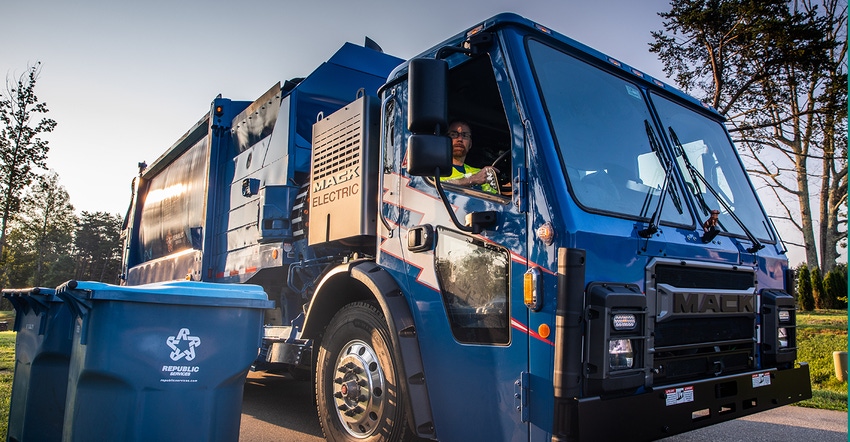As the race away from fossil fuels accelerates in fleets across the United States, capacity load size remains an obstacle in the waste and recycling industry. The National Waste & Recycling Association (NWRA) recently published a white paper that examined collection weight loads and subsequent legislation that could shape how quickly companies upgrade their fleets.

As the race away from fossil fuels accelerates in fleets across the United States, capacity load size remains an obstacle in the waste and recycling industry.
The National Waste & Recycling Association (NWRA) recently published a white paper that examined collection weight loads and subsequent legislation that could shape how quickly companies upgrade their fleets.
"Due to the heavier truck weights caused by EV batteries, load sizes must be decreased to compensate for existing vehicle weight limits on roads and bridges," the NWRA noted in the document. "This has led some states to reevaluate the maximum gross weight of vehicles for those powered by alternative fuels."
Lithium-ion batteries produced for electric vehicles add significant weight to collection truck loads, significantly impairing capacity. The average refuse truck weighs 33,000 pounds empty, and a lithium-ion battery could diminish load capacity with each one weighing up to 16,000 pounds, according to the report.
Darrell Smith, NWRA President and CEO, commented: “With the projected adoption of Zero Emission Vehicles (ZEVs) in the waste industry, we ask that EPA work with the U.S. Department of Transportation (USDOT) to resolve the challenges created by the increased weight of heavy batteries on electric vehicles. We encourage the federal government to find ways for the agencies to work together to help resolve these issues.”
The organization also called the industry "ideal for electrification." Waste and recycling collection vehicles run on limited speeds and continual accelerating/braking. However, weight limits could impact the nation's transportation infrastructure, presenting a stumbling block to fleet electrification.
" Additionally, perfection of heavy-duty truck EV technology, especially when it comes to the capacity required by the waste and recycling industry, remains elusive for now," stated the NWRA. "To the extent that any heavy-duty EVs are available, there are not enough of them on the market for purchase to fulfill the industry’s requirements."
About the Author(s)
You May Also Like




